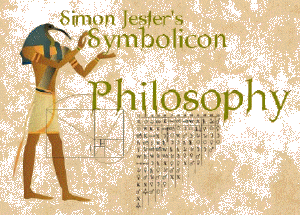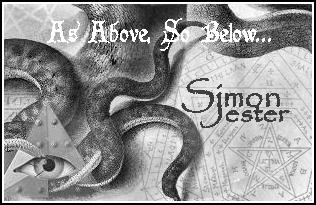In order to begin practical work with correspondences in your rituals you need to familiarize yourself with the many different tables of correspondences that fill the pages of books on magic. At the very outset, however, the novice will be baffled by the fact that there are certain inconsistencies in the items that appear in these lists. Don't be alarmed by this. Although the practice of magic has scientific aspects, its essentially non-rational, creative methods are incapable of strict scientific classification. Given that correspondences are thematic in nature and function primarily on an aesthetic level (as discussed in my previous blog entry) one can expect to find variations between the lists compiled by different ritualists. To use an analogy, a painter like Rembrandt employed shades of black, brown and yellow on his palette, whereas Mary Cassatt used pastel tints of white, blue, and pink and Henry Matisse recommended only pure unmixed colors for the best results. The important thing is to first learn what the various correspondences used by different practitioners actually are, and how they are used in the creation of rituals, without getting hung up on the fact that different correspondence tables don't correspond with each other perfectly.
I advise beginners to start by learning what might be called the "traditionalist" or "orthodox" set of correspondences employed by the Golden Dawn. This is the magical equivalent of advising the student of religion to commence a study of Christianity by becoming familiar with Catholic theology or telling the aspiring dramatist to carefully analyze the works of Shakespeare & Molière. If there can be such a thing as orthodoxy in magic, the Golden Dawn would be the Rock upon which it stands. Consequently, the two works that all students of the magical arts should read most carefully are Israel Regardie's "The Golden Dawn" (Llewellyn Publications) and Aleister Crowley's "777" (Weiser Books.) Although Crowley broke with the Golden Dawn and went on to initiate the Thelemic movement, he continued to use an essentially Golden Dawn influenced set of correspondences, and the tables which he presents in "777" are often simply expanded versions of those first tabulated by MacGregor Mathers and other founders of the G. D.
The sheer size and exhaustive content of Regardie's "The Golden Dawn" make this work somewhat intimidating to the beginner. With its lengthy rituals, Knowledge Lectures, diagrams, charts, tables, & drawings of arcane symbols, this hefty manual of magic became a key work in the evolution of the 20'th century Hermetic tradition, and Regardie deserves great praise for his courage in publishing it. By doing so, he helped to preserve a valuable system that probably would have been lost to history if reserved for perpetuation via initiatory transmission alone. There are numerous tables of correspondences throughout "The Golden Dawn" and, by searching patiently through its over seven-hundred pages, you can copy out these correspondences into a notebook and learn them more conveniently. (But do please read the book also! The detailed initiatory system it presents is the backbone of contemporary "orthodox" magic.)
I often hesitate to recommend the works of Crowley to people in the earlier stages of their Hermetic study. Crowley is a very misunderstood writer whose personal quirks and twitches too frequently obscure his meaning. Many of his statements were intended purely as humor & satire and he can provide a terribly funny read—a fact often completely missed by his more serious and fanatical followers! But Crowley's humor often degenerated to the level of vulgar sarcasm, and he seemed incapable of resisting the urge to heap verbal abuse upon anything that irritated him. Sadly, Crowley was irritated by virtually everything, and so readers of his works must wade through paragraphs of insults and personal ranting that soon become tedious.
Crowley also frequently cared little about making his works easily accessible to the novice, and, when he managed to write seriously, usually intended his output for the perusal of other learned adepts. Consequently, "777" is a very difficult book for the beginning student. Begun by Crowley as personal notes to aid his mastering of the Golden Dawn system, the correspondence tables in "777" were later greatly expanded by the irascible Beast into the complex network of esoteric interrelations that today confronts (and often confounds) the reader. Without a doubt, they are the most fascinating and complete set of magical correspondences available today, but they are arranged and presented in a fashion that makes them very daunting to beginners.
The best piece of advice I can give anyone beginning to read "777" is this: take the time to learn the old fashioned system of Roman numerals that Crowley uses to organize his tables! Without a mastery of this antiquated system of numerical notation, you're probably going to become hopelessly lost in the twisting corridors of Crowley's "777." Next, you must have some familiarity with the Hebrew alphabet and the Qabalistic technique of Gematria. Without this, much of the value of "777" will be completely missed. So, prepare in advance by learning Roman numerals and acquire a rudimentary knowledge of Hebrew letters and you will find that your journey into the labyrinth of "777" becomes increasingly rewarding. Also, please take your time! Start slowly with small sections and try to understand how the various items in the Tables fit together. After working patiently with this text, you will begin to get an intuitive sense of the powerful set of correspondences that it provides.
Israel Regardie's "A Garden of Pomegranates" (Llewellyn Publishers) provides a somewhat easier way of learning the basic magical correspondences. Regardie's text was written as a Qabalistic primer, and provides most of the important correspondences used in Qabalistic/magical rituals and Pathworkings. The edition available today has been greatly augmented by Chic and Tabitha Cicero, who provide detailed examples of the kind of visualization required to understand the correspondences and do the Pathworkings. Written as it was by Regardie, this work provides a less complicated way of beginning to learn the vast Golden Dawn system of correspondences, and I highly recommend it to anyone aspiring to learn the magical arts.
All of these books are available at major booksellers or online at Amazon.com. To save money, you can also find used copies in good condition on Ebay or Half.com. There are also magical tables of correspondences available online, but use them with an emphatic caveat emptor, please. Anyone can put up a web page these days, without the benefit of pre-publication editorial review, and the mere appearance of a person's work online is certainly no guarantee of its accuracy or other merits. Someone could be an initiated magus or a drug-befuddled dabbler and still manage to present him/herself with impeccable looking credentials on a beautifully designed website. The only real way to judge the worth of online correspondence tables is to compare them with the tables given in the written works noted above. There are good sources online, but you have to first learn how to separate the wheat from the chaff. When it comes to magical correspondences, the online works of Bill Heidrick are the best. Simply search for his name on Google and numerous links will magically appear. Other trustworthy online writers are Aaron Leitch, Mark Stavish, and (for Alchemy) Adam McLean. I'm sure there are other trustworthy online sources, but these are the writers I most frequently read.
Before closing, I should mention that there are other ways of determining magical correspondences besides just reading about them in books written by other people. If you advance in your magical career and don't become utterly discouraged by the prospect of having to learn Roman numerals, you will eventually acquire these other methods, which involve the direct apprehension of new correspondences via ritually enhanced states of consciousness. By using such methods, you can (like Crowley did in "777") augment existing tables of occult interrelationships with data gained through your own dreams, meditations, astral travels, and magical workings. But my 23 years of work as a psychotherapist have convinced me that a person needs to have a solid grounding in an established magical tradition before venturing forth into completely unexplored territory.
When used wisely, so-called "free-form" or Chaos Magic has great power, but there is a very thin line between the highly personalized systems of the Chaos Magician and the incommunicable neologisms and delusional pseudo-metaphysics of the dysfunctional paranoid schizophrenic. Magic is an integrative technique that facilitates adaptation and enhances evolution, not an isolating journey into a subjective Twilight Zone in which a person slowly looses the ability to communicate and interact effectively in the objective realm. To take a Qabalistic turn, a balanced Middle Pillar position on the Tree of Life requires a blending of both Right Pillar creative originality and Left Pillar formalistic structure. The structure that you will gain from traditionalist books like Regardie's "The Golden Dawn" and Crowley's "777" will provide a necessary fulcrum for your creative Force. Without such a fulcrum, you risk dissipating your energies on the creation of personally isolating fantasies.
Now that you have some practical advice concerning how to learn what the "orthodox" magical correspondences of the Western Hermetic Tradition are, my next blog entry will present a list of twelve things you need to consider when using correspondences in your rituals.

